Product Spotlight: The Versatility of Gazebos
Gazebos have been a popular outdoor structure for centuries. The word first appeared in England around 1752 and is believed to be a combination of the English word “gaze” with the Latin suffix “ebo” which means “I shall.” Thus, the word “gazebo” means “I shall gaze.”
Pavilion structures have been found in many ancient cultures. Some believe the earliest gazebos had their origins as garden temples.
Below is a look at the history of gazebos and how modern-day homeowners and businesses are using different types of gazebos for personal and commercial needs.
Gazebo History
What’s the origin of the gazebo? The earliest known gazebos were discovered on Egyptian garden plans dating back to 1400 BC. They were murals created on the tombs of Egyptian royalty with a complete layout of their gardens. Historians have speculated that images of enclosed gardens with walled, free-standing enclosures were representative of what we now call gazebos.
In Rome and Greece, these outdoor structures were built like small temples, usually out of marble. Their popularity grew as the affluent built summerhouses along the coast, complete with garden gazebos that were the focal points of many homes.
During the 14th century, the French built four gazebos at the Louvre. Influenced by French styles, English gazebos grew in popularity in the 15th century. During the Renaissance period, Italians developed similar outdoor gazebo-like structures called “belvederes” featuring a roof with one or more open sides.
China and Japan also have a long history of incorporating gazebos into their gardens, teahouses, and summerhouses. In the late 18th century, their influence began popping up throughout Europe, and the term “gazebo” was introduced into the English vocabulary.
Gazebos finally gained popularity in the U.S. in the mid-1800s but faded out as homeowners began to build homes with grand porches. But in the 1930s, gazebos made a return and became a status symbol representing a peaceful place of retreat from the main home.
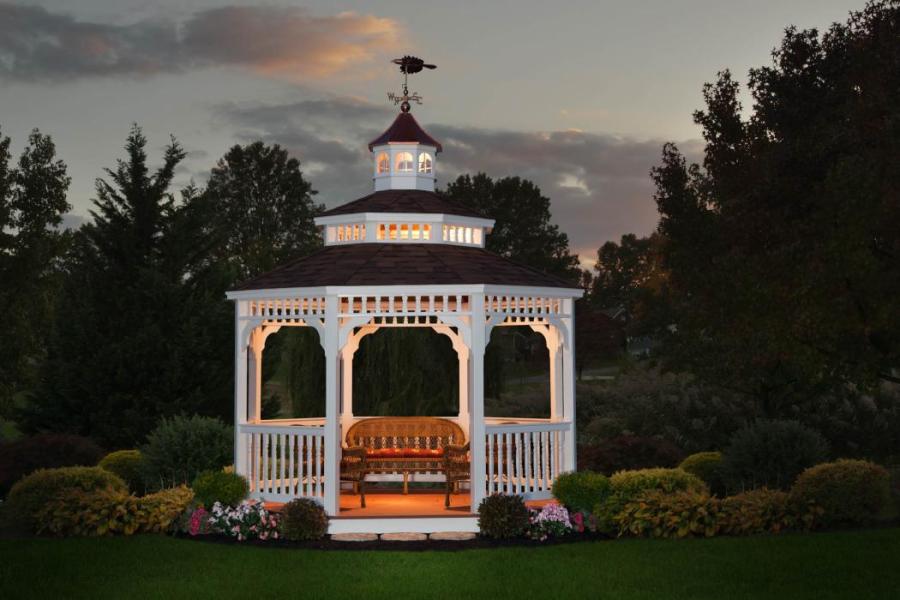
Today’s Traditional Gazebos
So, what is a gazebo used for these days? Lots of different things! There are so many versatile uses for outdoor gazebos, and Lancaster Barns is your go-to source for Amish custom gazebos crafted in Lancaster County, PA.
Buying a backyard gazebo for personal or commercial use offers these benefits:
- Protection: Covered outdoor structures can protect you from sun, rain, and other weather conditions. This makes them ideal for relaxing or entertaining outdoors.
- Enhanced Outdoor Living: They can enhance your outside living space by creating a dedicated area for activities like dining, reading, and gathering with friends and family.
- Aesthetic Appeal: Gazebos can elevate the beauty of any outdoor space by serving as a focal point or accent piece to the landscape.
- Privacy: Depending on the design, gazebos can offer privacy and allow you to enjoy your outdoor space without feeling exposed.
- Long-Term Investment: A quality-built gazebo will last for years with proper maintenance and offer long-term usage and enjoyment.
- Furniture Protection: Placing outdoor furniture inside the structure will protect it from damage and extend its lifespan.
- Year-Round Use: Depending on your climate and the gazebo design, a gazebo can be used throughout the year for outdoor enjoyment.
What is the gazebo that’s best suited for your needs? Lancaster Barns has a wide range of styles, sizes, and materials to choose from.
Commercial Gazebos
Commercial gazebos are available for on-site assemblies within a 300-mile radius of our company headquarters in Lancaster County, PA. They can also be shipped in kit form throughout the U.S. Our commercial vinyl gazebos are a popular products with versatile utility for schools, churches, parks, and any other commercial establishment that provides outdoor gathering spots.
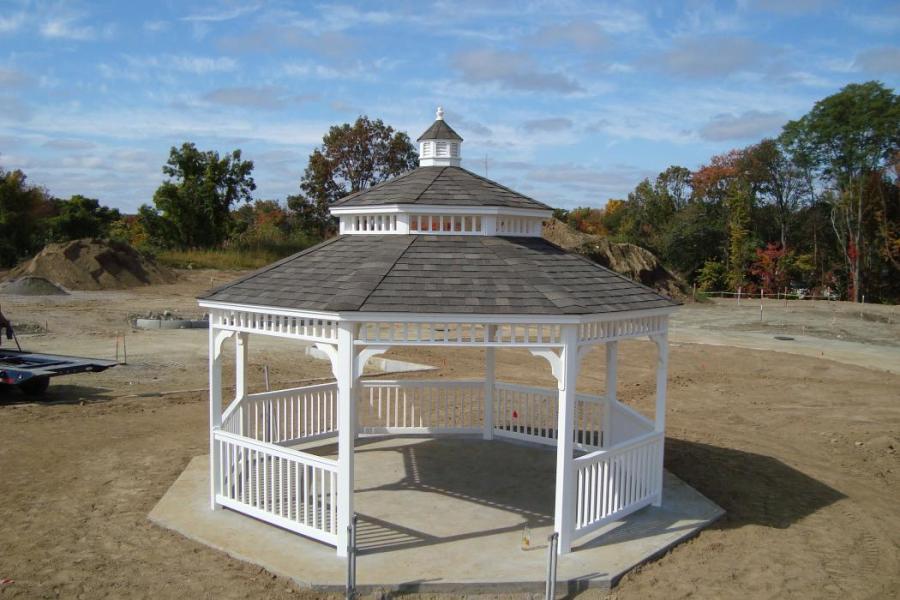
Vinyl Gazebos
A vinyl gazebo is a fantastic, low-maintenance option for any backyard. Our product line comes in variety of shapes, sizes, roof styles, and colors that can complement practically any property layout and architectural style.
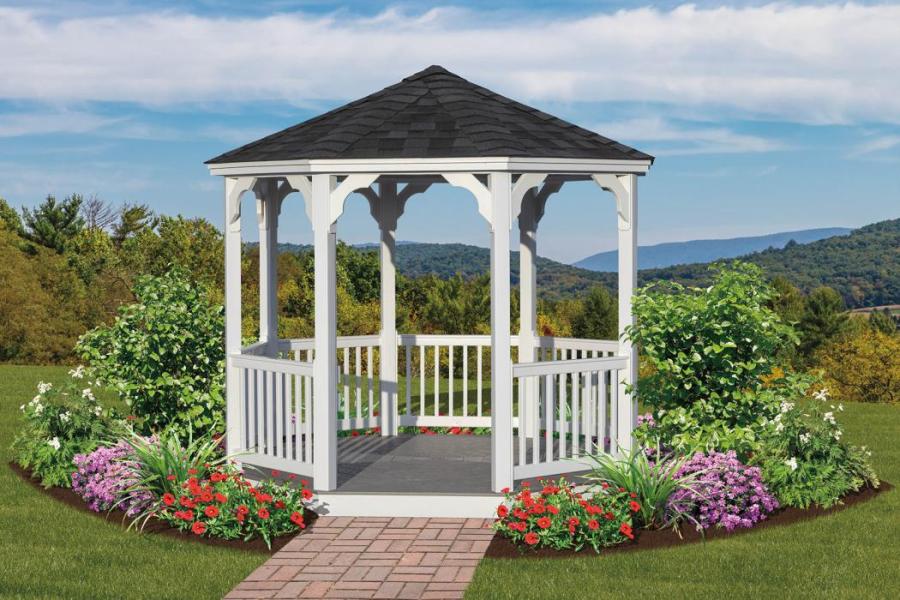
Wooden Gazebos
Pressure-treated wood gazebos from Lancaster Barns are the best of the best. Our craftsmen use clear-grade, kiln-dried, hand-sealed lumber to construct your gazebo. You’ll enjoy the rustic look and feel of wood that complements any outdoor space and is easy to maintain.
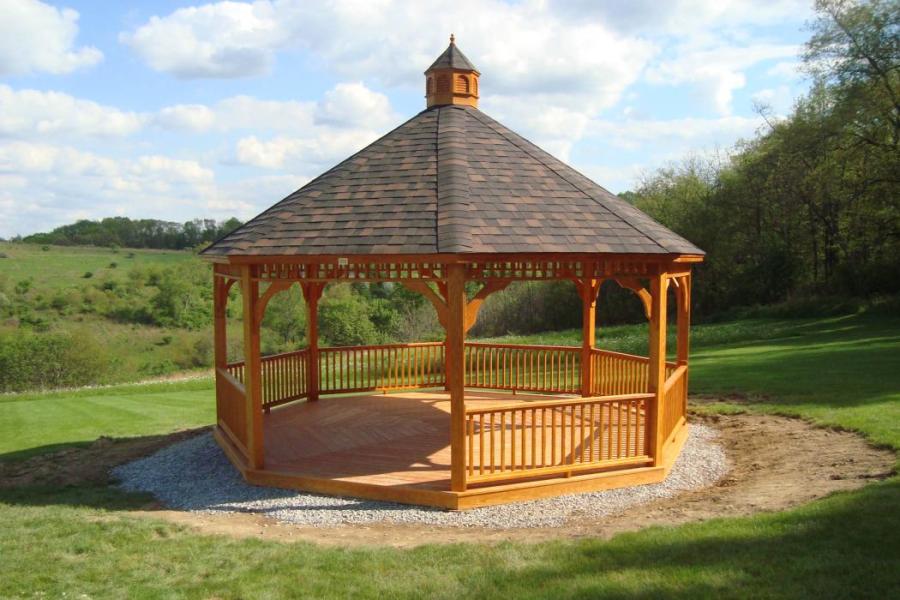
Cedar Gazebos
Clear-grade, western red cedar is used to construct our cedar gazebos. It’s an aesthetically beautiful choice that is naturally resistant to rot, decay, and insect attacks. Just envision your garden gazebo crafted with the finest details in design and construction!
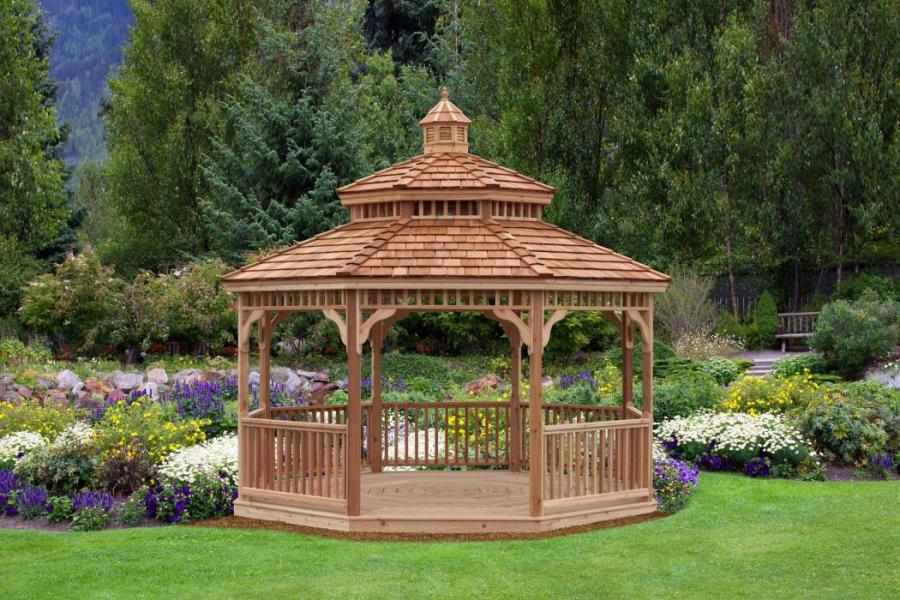
Rectangular Gazebos
A rectangular gazebo from Lancaster Barns will add a touch of class to any outdoor space. Two popular options include our classic vinyl rectangular gazebo with a single-roof style and our vinyl Victorian rectangle gazebo with a double-roof style.
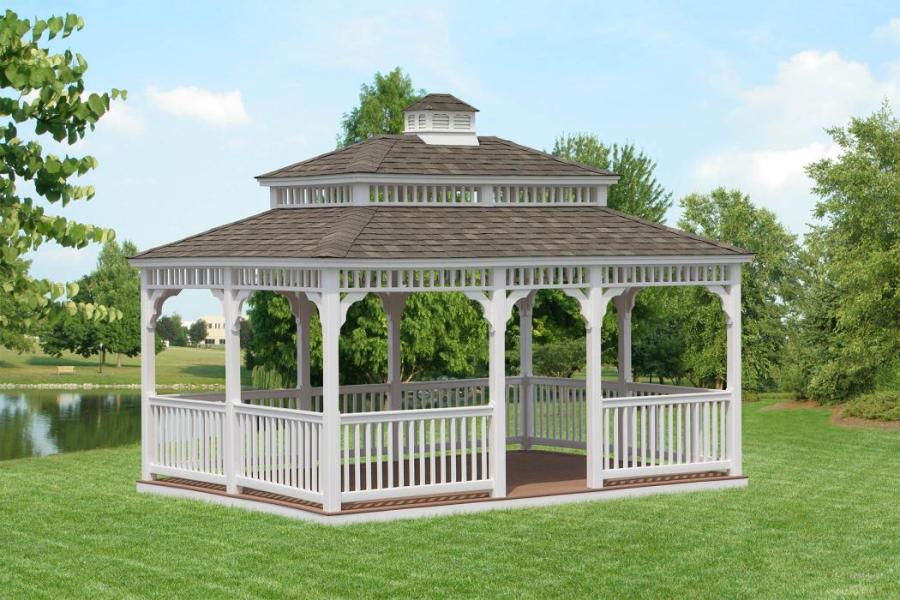
The Difference Between a Gazebo and a Pavilion
Ever wonder what the difference is between a gazebo and pavilion? Wonder no more!
Both types of outdoor structures are designed to provide shelter and aesthetic appeal, they are some key differences.
In the simplest of terms, a pavilion is essentially a gazebo with no rails, spindles, or wall enclosures. They are most often used for gatherings, events, and recreational activities, where a gazebo is often used for more decorative purposes in gardens and parks, providing a sheltered space where you can enjoy nature’s surroundings.
Flooring can be another key difference between gazebos and pavilions. Gazebos often have built-in flooring made of wood or other materials. But a pavilion may or may not having built-in flooring. If it does, it’s typically concrete or gravel to stand up to the traffic of larger groups and activities.
To design your own pavilion, check out our free virtual design tool.
Create Your Amish Gazebo from Lancaster Barns Today!
Contact Lancaster Barns today and start creating your new backyard gazebo with help from our expert designer. Connect with us Monday through Friday at (717) 553-0300, or request a free quote online anytime.


